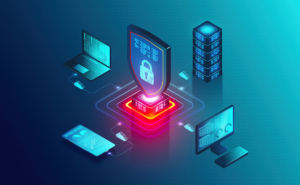Endpoint detection and response, or EDR Performance, is an essential layer of cybersecurity that monitors files and end-user devices to provide another layer of defence against cyber-attacks that circumvent network-based defences.
Its cyber telemetry collection feature offers visibility, rapid investigations, and remediation automation. Furthermore, this collection facilitates forensic tools as well as threat-hunting activities.
Real-time Alerts
Real-time alerts allow healthcare settings to quickly identify anomalies in data that need immediate attention, significantly where physiological conditions change constantly. Real-time alerts help quickly spot these irregularities for direct intervention, making this feature particularly essential when managing healthcare conditions that shift quickly or continually change over time.
EDR scans machine data for threats, but it is not designed as a preventive service that can stop attacks from happening altogether. Instead, EDR works like a DVR – recording events and alerting security professionals of incidents that evade prevention so they can triage, investigate, and respond promptly before becoming breaches.

Real-time Alerts monitor multiple data sources to detect anomalies, including raw log messages and metadata. Utilizing filtering and delivery methods (email, Slack, Jira, Pushover or PagerDuty), you can create custom alerts monitoring specific metrics or use predefined Alert presets that track critical business metrics like active visitor spike detection or conversion/signup rates. Real-time Alerts even employ anti-flooding settings so that no duplicate alerts arrive simultaneously.
Detection & Response
EDR solutions use software agents to monitor endpoints within your network, such as employee workstations, servers, mobile devices and IoT systems. These agents gather data sent back to a central server for analysis by security teams to detect advanced threats like file-less malware attacks and zero-day exploits that bypass signature-based antivirus tools.
The EDR platform detects suspicious activity and provides detailed telemetry for full triage and investigation. Security teams can quickly detect sophisticated cyberattacks by combining real-time event data with contextualized intelligence from global threat intelligence services.
EDR solutions help security teams recognize attack patterns such as tactics, techniques, and procedures (TTPs). When TTPs occur during an attack, they can activate automated response options that stop it in its tracks. Many EDR solutions also include forensic tools for deeper analysis or postmortem assessments that can create threat maps to identify and resolve incidents quickly.
Integrations
An effective EDR solution provides continuous monitoring and real-time endpoint data collection via an agent installed on workstations and servers to monitor the behaviour and report it to its primary server. In addition, such agents offer signature-less detection instead of pushing traditional antivirus signatures onto each workstation or server.
Once a threat has been identified, security teams will receive alerts, and automated responses will occur (e.g., disconnecting compromised processes or disabling endpoints). Furthermore, data collected for further investigation or proactive threat hunting will also be archived to safeguard future efforts.
Gartner recently coined the concept of XDR (extended detection and response technology). These tools monitor a company’s network, cloud services and third-party data – in addition to endpoints – improving security significantly compared to a solution that investigates threats siloed. One such solution is CrowdStrike Falcon platform’s situational analysis architecture which automatically correlates data from multiple sources for faster investigations and remediation processes.
Reporting
Dwell time – or undetected threat time – indicates how well your cybersecurity protections work. EDR allows you to reduce threats that evade perimeter defences by monitoring indicators of compromise and detecting advanced attack patterns in real time.
EDR solutions combine continuous endpoint monitoring and detailed event records with helping you better understand attacks and strengthen your security program. They show what was targeted by attackers when trying to gain entry, making it easier for you to spot vulnerabilities.
EDR solutions also enable organizations to quickly collect and process data while automating certain response activities based on predefined rules for faster investigations and remediations and map suspicious activity against the MITRE ATT&CK framework to assist with contextualized threat hunting. EDR allows organizations to detect threats before they cause lasting damage – which gives you peace of mind knowing threats can be eliminated before lasting damage is done.
